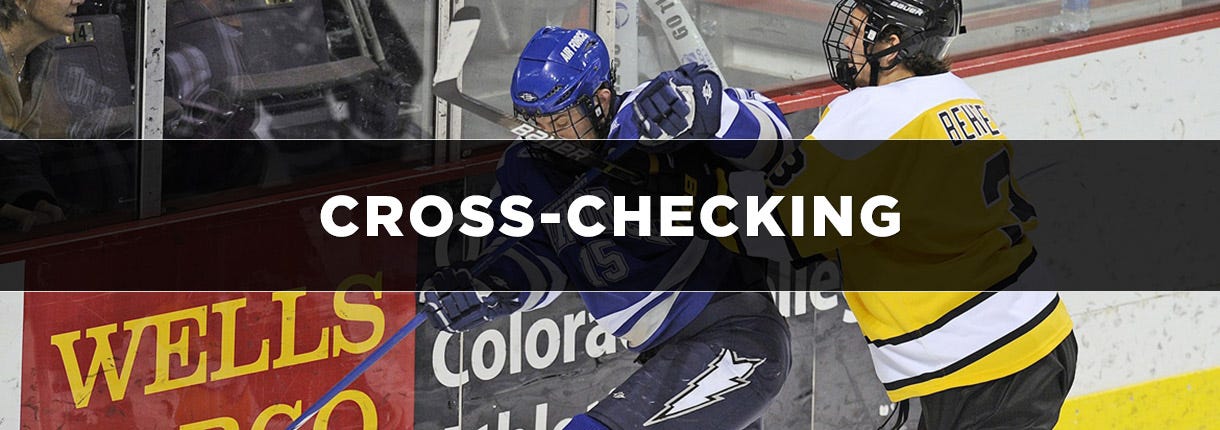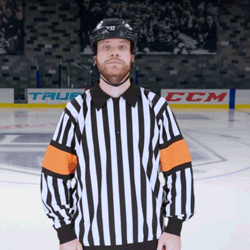Cross-Checking in Hockey: Definition and Examples | Hockey Monkey

Cross-checking in hockey is the action of a player using the shaft of his stick between two hands to forcefully hit an opponent. This occurs when the player holds his stick with one hand at the top, and the other about halfway down the shaft, and does a “pushing” motion with it into an opposing player.
Luckily for referees, a Cross-Check is very easy to spot. Following the infraction, referees must determine how severe it was. He can then assess one of the penalty types, which will be discussed in detail later in this guide.
Protect yourself from Cross-Checks by browsing, where you can find a wide variety of hockey sticks and hockey gloves!
- Video Example of Cross-Checking
- Cross-Checking Referee Sign
- Penalties for Cross-Checking
- Official NHL Cross-Checking Rule Text (Rule 59)
- Avoiding Cross-Checking Penalties
Video Example of Cross-Checking
In the video above, the Avalanche (dark jersey) player is seen hitting the Lightning (white jersey) player from behind in a Cross-Checking motion. The Avalanche player holds his stick between both of his hands and uses it to forcefully push the Lightning player into the boards. To make matters worse, it was in the back and well after the Lightning player got rid of the puck. It resulted in a five-minute Major Penalty for Cross-Checking for the Avalanche player.
Cross-Checking Referee Sign

The referee will make a fist with both hands and spread them about two feet apart, at chest level. From there, a forward motion will be made with both hands in unison.
Penalties for Cross-Checking
Like most of the other penalties in ice hockey, the severity of the infraction will determine what type of penalty is called. In most cases, Cross-Checking in hockey will draw a Minor Penalty (two minutes).
However, if the referee determines that a player was intentionally trying to injure their opponent, the referee can call either a Major Penalty (five minutes), a Match Penalty (removal of player plus five-minute penalty), or a Game Misconduct Penalty (removal of player plus 10-minute penalty).
Again, it is at the referee’s discretion to determine which type of penalty the infraction deserves.
Official NHL Cross-Checking Rule Text (Rule 59)
The action of using the shaft of the stick between the two hands to forcefully check an opponent.
Avoiding Cross-Checking Penalties
The primary factor of a hockey Cross-Check is contacting an opposing player with your stick. What this means, is that the player making the hit can be in the Cross-Checking position, but if the initial point of contact is with the shoulder or back, not the stick, then it is a legal hit.











